Causes and Risks
Common Causes of Infertility in Men & Women
Some leisure activities, jobs, and the use of drugs and medications may all increase the chances of infertility. On the positive side, some lifestyle changes may bolster a couple’s chances of having a family.
Factors that can influence fertility include:
Caffeine and Infertility
While previous research has suggested that women who drink coffee and other caffeinated beverages regularly may experience fertility problems, newer studies do not find that coffee drinking had a significant effect on fertility. In fact, a study of 210 women who were trying to conceive found that those who drank as little as a half a cup of caffeinated tea each day were twice as likely to become pregnant as women who did not drink tea.
It is claimed that the polyphenolic compounds in tea may promote fertility by inhibiting chromosomal abnormalities, thereby decreasing the number of nonviable embryos. Also hypoxanthine, another chemical in tea, might be the primary component of follicular fluid contributing to maturation and ability of eggs to fertilize.
On the other hand, tea drinking may simply be a marker for a healthier lifestyle. Women who drink tea typically eat less fat, exercise more, and smoke less than do coffee drinkers.
In short, there may still be a negative relationship between too much caffeine and pregnancy, so that women should still be cautious about how much caffeine they consume once they are pregnant.
Drugs and Infertility
Any woman trying to conceive should avoid unnecessary drugs, both for the sake of her fertility and because some drugs have a devastating effect on the developing embryo in early pregnancy. Excessive use of recreational drugs, including more than one drink of alcohol a day, can also harm fertility in both men and women.
In addition, some medications, such as cimetidine, nitrofurantoin, sulfasalazine, spironolactone and nifedipine are known to harm sperm quality as do anabolic steroids including testosterone.
Sex and Infertility
Couples trying to conceive who want lubrication during intercourse are best advised to go to their refrigerator rather than their medicine cabinet. Vegetable oil and olive oil don’t have too much of an impact on sperm survival and petroleum jelly is also a relatively safe alternative. However, lubricants such as K-Y Jelly, Surgilube, Alpha Keri & Keri Lotion contain bacteriostatic agents, which can significantly decrease sperm motility. Saliva, contrary to popular belief, is also toxic to sperm. The best option is to use nothing.
Timing is also very important. Having intercourse too often may result in fewer sperm and impaired motility, or movement. Infrequent intercourse can also cause sperm counts to drop, or can cause a couple to miss an opportunity to conceive.
Smoking
Smoking and Male Fertility
Cigarette smoking increases the chance of male infertility, having significant harmful effects on sperm motility, sperm morphology and erectile function. The effects correlate with the amount smoked, so men who smoke should cut back as much as possible even if they can’t completely give up. After smoking cessation, it takes about three months to restore these functions to their normal state.
Smoking and Female Fertility
Smoking also has a harmful effect on a woman’s fertility. It can cause longer waits before getting pregnant, more miscarriages, early menopause and abnormal eggs. Follicular fluid, when tested in women who smoked, showed high levels of cadmium, a heavy metal present in cigarettes, as well as cotinine, a metabolite of nicotine.
Stress and Infertility
Whether or not stress causes infertility remains unclear. However, couples with extremely busy schedules, or who do extensive traveling may not find time to have intercourse every two days around the time when the woman is ovulating. Busy couples with fertility problems may also find it hard to cope with the demands of an infertility evaluation and treatment plan.
Weight and Infertility
Physical fitness is appropriate in moderation. Women who exercise so strenuously that they stop having menstrual periods or lose too much body fat may become temporarily infertile. A certain amount of body fat appears to be necessary for a woman to be able to have a successful pregnancy. On the other hand, obesity in women can also cause problems with fertility.
Obesity and Infertility
There are a significant number of overweight and obese females who suffer infertility. This could be a consequence of irregular periods and frequently anovular (non-ovulatory) menstrual cycles. A large percentage of those infertile patients have Polycystic Ovarian Syndrome (PCOS), a disorder often associated with obesity, chronic anovulation (lack of ovulation in a menstrual cycle), and menstrual irregularity.
Anovulation is also seen in patients with a body mass index (BMI) of less than 30 due to hormonal imbalances. Although the exact mechanisms of how obesity affects fertility are not well understood, there is an apparent insulin-mediated hyperstimulation of ovarian steroid production and decreased sex hormone-binding globulin.
Obesity impacts IVF treatments, and has been associated with the following:
- Early pregnancy loss after IVF
- Decreased pregnancy rate
- Decreased fertilization
- Higher gonadotropin requirements
- An impaired response to gonadotropins
The cause of a poor IVF treatment outcome may be due to poor oocyte quality with subsequent lower fertilization and/or implantation defects caused by a qualitatively poor endometrial milieu. Finally, there are a number of endocrine changes that are associated with being overweight or obese.
To schedule a consultation with one of our Reproductive Specialists, call us at 866-HRC-4IVF or click the button below:

